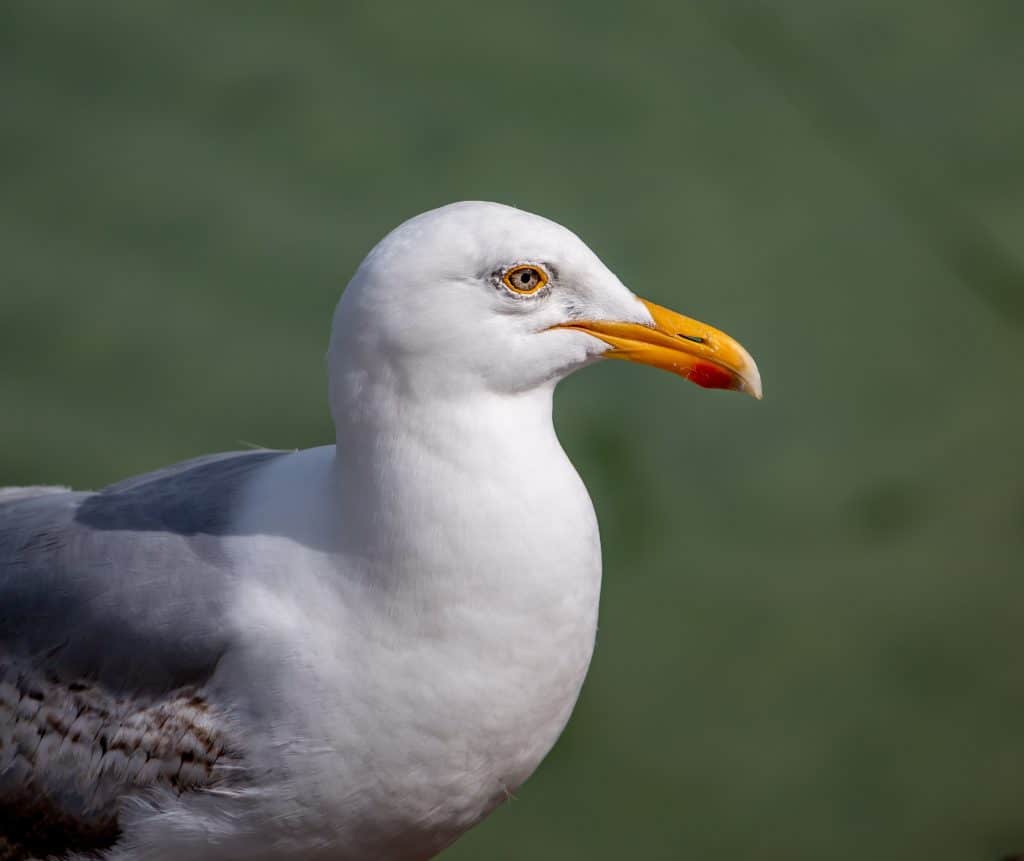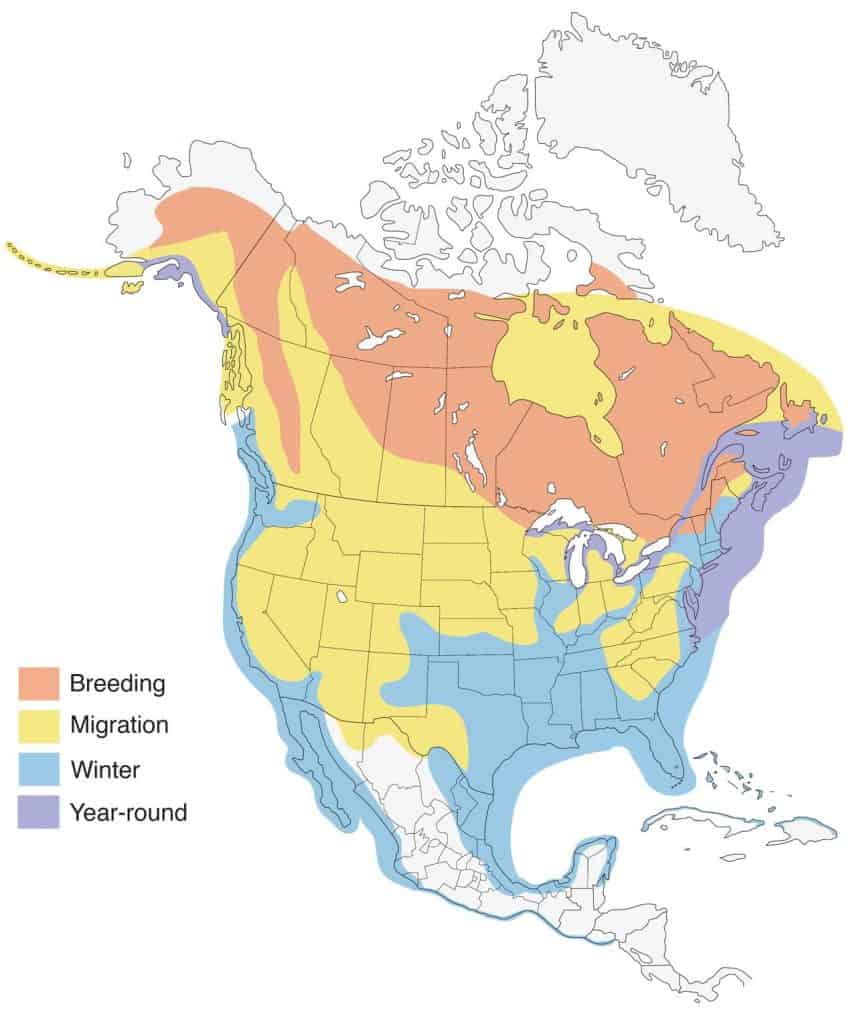
| Appearance | The herring gull is a large bird about 25″ long. They’re pal gray above with a white head and underparts. The head has brown specks except for the summertime when it’s pure white. They have yellow eyes and bills, and pink legs. |
| Diet | fish, marine life (shellfish, sea urchins, crabs…), insects, other bird eggs, and bird nestlings. |
| Feeder Food | They don’t visit feeders. |
| Habitat | Open water areas both coastal and inland. |
| Nesting | Herring gulls nest on the ground. They have 1 brood/season and 3 eggs/brood. The eggs are light green/tan with spots. Incubation is for 27-30 days and fledglings leave the nest after a few days. |
Migration: Herring gulls are migrators. While a population of them remain along the east coast year-round, others migrate north to Canada and Alaska in the spring to breed and raise young. In the fall, they migrate south for winter.
Year-round range: Southern Alaska, northern Wisconsin, Michigan, New York, and the east coast south to South Carolina as well as a narrow string in southern Quebec.
Breeding range: Alaska, northern Vermont, New Hampshire, and Maine, as well as all of Canada.
Winter range: Washington, west coasts of Oregon & California, Colorado, New Mexico, Kansas, Oklahoma, Texas, southwest Wisconsin, Illinois, Iowa, Arkansas, Missouri, Alabama, Mississippi, Georgia, Florida, and Mexico’s coasts.
Range Map


